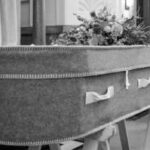How many Dr Who actors can you name? Two? Three? At a stretch most could probably remember four or five, with more avid fans able to name all eight TV doctors. The names which spring most commonly to mind are probably Jon Pertwee and Tom Baker, followed by Troughton, Davison and original doctor, William Hartnell. Whilst the majority of fans can probably also name Colin Baker, Sylvester Mc Coy and Paul McGann, few, if any, would mention Ron Feague. Nevertheless, this little known actor did once play the much sought after role of Dr Who, although the episodes he filmed have never been publicly screened. Rumours of wild drunken capers and bizarre sexual antics surrounded his brief reign as the Time Lord. These, coupled with the radical new direction for the show pursued by avant-garde producer Johnnie Quean, led shocked BBC chiefs to fire both leading man and producer. The Feague episodes were shelved and the whole incident buried. However, with the BBC’s recent announcement of plans for a new Dr Who series, Feague and Quean’s roles in the long-running series’ saga have recently been highlighted by the Alternative Dr Who Appreciation Society (ADWAS) in their publication Renegade.
According to Renegade editor Jake Tifter, the BBC was forced in early 1974 to recast the role of the Time Lord due to Jon Pertwee’s well-publicised mental breakdown. “He became convinced that he was a high priest of the Roman Goddess Mania,” says Tifter. “At first this was tolerated as an amusing eccentricity, even when he sacrificed live chickens on set during the filming of Death to the Daleks, in order to ward off evil spirits. Even when he set up his own coven, a blind eye was turned. However, it was when he borrowed several ceremonial robes from the wardrobe department and attempted to sacrifice Elizabeth Sladen during a midnight ceremony in a Surrey chalk quarry, that BBC chiefs decided that he had gone too far.” Miss Sladen (who played Pertwee’s assistant Sarah Jane Smith) was only saved when the ceremony was broken up by Nicholas Courtenay (Brigadier Lethbridge-Stewart) arriving in his UNIT uniform and firing his service revolver in the air. Pertwee’s replacement, Ron Feague, was chosen by incoming producer Johnnie Quean, who wanted to dramatically restyle the series. Out went Pertwee’s interpretation of the doctor as an Edwardian gentleman adventurer, complete with frilly shirts; in came Feague as a John Lennon-type intergalactic peacenik rebel, complete with tie-dyed T-shirts and granny glasses. His initial adventure, set in the swinging London of 1969, was to involve the Doctor enlisting the aid of Jimi Hendrix in defeating a race of evil aliens seeking to harness the sexual energies of the permissive society to power a devastating new weapon.
However, the project was soon undermined by Feague’s enormous appetite for weird sex. “Very early on two makeup girls complained to Quean about him,” recalls Tifter. “Apparently he offered to show them his “time rotor”, then whipped out his knob and proceeded to take Captain Picard to warp speed whilst making the TARDIS dematerialisation noise.” A few days later Feague and guest star Shirley Quimby were treated for severe bruising and lacerations after they attempted to have sex on the TARDIS control console. Feague had bribed a technician to operate the time rotor as he and Quimby shagged on it. Unfortunately their combined weight proved too much for the ten-year old set, which collapsed beneath them, with several shards of plastic embedding themselves in Feague’s arse. Filming was suspended for five days while the set was rebuilt. Worse was to come. Three weeks into filming a tabloid newspaper ran a story in which a young female fan described how Feague had taken her back to his hotel room and engaged in kinky sex games. In the course of these she stripped naked and pretended to be a Dalek, using an egg whisk and a sink plunger. As he shouted “Regenerate me child!”, she beat his testicles with the whisk, before bringing him off with the plunger.
The BBC was now beginning to have severe doubts about Feague, and told Quean to exercise greater control over his leading man. A week later another tabloid story showed photographs of Quean receiving a golden shower from a rent-boy dressed in a Sea Devil costume. The rent-boy claimed that Quean had originally wanted him to use a Cyberman costume, but became worried that it might rust. This along with scenes of the Doctor sharing a joint with Hendrix and a lengthy LSD trip sequence in the completed episodes, proved the final straw for the BBC, and the plug was pulled on the project. Both Feague and Quean were fired. Three months later Feague sold a story to a national newspaper in which he claimed that he had been kidnapped by two obsessed female fans who had chained him to a bed and spread cream all over him, before licking it off. It later turned out that Feague had had Quean video the whole incident. The BBC successfully sued when they released the video with the Dr Who title sequence at the beginning under the title Dr Who and the Orgasmanauts.
We asked Renegade editor Jake Tifter why ADWAS had chosen now to spotlight the brief Feague/Quean era. “With the announcement of plans for a new Dr Who series, there has been a renewed interest in the TV series”, Tifter told us. “We felt that that rather than trot out the usual well- worn anecdotes and cast biographies, we’d give the fans something new. This is the one area of the series which has never before been explored.” Indeed, many fans would rather that the Feague episode be kept under wraps. “A lot of die-hard fans, especially in the other main fan organisation, the Dr Who Appreciation Society, feel that it reflects badly on the programme, and will leave it open to ridicule”, says Tifter. “But we believe that Ron Feague is an integral part of the programme’s history.”












